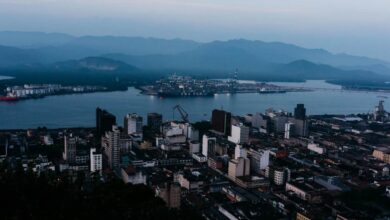The Role Of FAO In The Protection Of Forests In Latin America
The Food and Agriculture Organization of the United Nations has promoted social and environmental projects for the protection of forests

Photo: Wikimedia-Jonathan Vélez Giraldo
LatinAmerican Post | Luis Ángel Hernández Liborio
Listen to this article
Leer en español: El papel de la FAO en la protección de los bosques de Latinoamérica
The Food and Agriculture Organization of the United Nations (FAO for its acronym in English) has among its functions the protection of forests, its perspective goes beyond environmental care and maintenance as lungs of the world. Their importance is dynamically integrated with the availability of food, water, energy and other essential resources for the communities that inhabit them. Therefore, we make a brief review of some of the most important actions that FAO promotes for the protection of forests in Latin America.
Wood energy
Forests have a deep mysticism, they are an active part of the cosmovision of numerous cultures, in addition to their primordial role in the ecological balance. However, they are also a vital source of energy for millions of people, the problem is that the loss of forests between 1990 and 2020 amounts to 178 million hectares in the world, although it has slowed down, according to FAO data. Globally, one third of the global population (some 2.4 billion people) depend on forests for energy. How do forests provide us with energy? The answer lies in dendroenergy, which is the use of forest biomass to transform it into energy. The interesting thing is that it can be used from rudimentary processes such as firewood, to far-reaching and sophisticated industrial uses.
The main unknown before this is sustainability. One of FAO's objectives is that the use of forests be sustainable through financial, ecological and social mechanisms that are integrated for a reasoned use of resources. Thus, there are forest areas with suitable species to be used as biomass. Costa Rica with its forest wealth has been one of the countries that has made the greatest progress on the subject, according to the Technological Institute of Costa Rica, raw or processed wood can be used in various methods, one of them even allows the gasification of the wood that in turn serves as fuel for other industries. Given this scenario, a productive chain is required that links legal plantations with the industry so that there is an integration between both points and the intermediate processes.
FAO's priority projects in Latin American forests
According to the FAO, five countries account for 54% of the forest area in the world, of these five one is in Latin America: Brazil. The South American giant alone owns 12% of the world's forests, so the positive or negative impact on them notably affects the entire region. By its nature, FAO focuses its efforts on everything related to food, so its priorities in Latin America in terms of forests are aimed at guaranteeing food security. Thus, in 2021, FAO contributed $26.9 million dollars from the Green Climate Fund and the Global Environment Fund , with this it seeks to support community initiatives for sustainable agriculture and protection of biodiversity, including forests. The better the health of the ecosystems, the agricultural production will benefit from not having the harmful effects of climate change. As an example, in 2021 in El Salvador, FAO supported the restoration of 3,000 ha of forests. The entire region has projects of this nature framed within the Forestry Commission for Latin America and the Caribbean (COFLAC).
You can also read: Tropical Forests in Latam And The Threats That They Face
Forests and their ancient inhabitants
In addition to its flora, fauna, water and energy resources, forests are home to millions of people. Latin America has 935 million hectares of forests, according to FAO data, of which 404 million are inhabited by indigenous communities. This extension is comparable to twice the size of Mexico, making it an area of the utmost importance. Most of the area inhabited by indigenous people is found in the Amazon, 237 million hectares, which represents 60% of inhabited forests. The communities that have lived there for centuries have developed their lives around the forest and its resources, generally in a sustainable way. The problem for them has been the devastating illegal logging that has deforested huge areas and put their way of life at risk.





